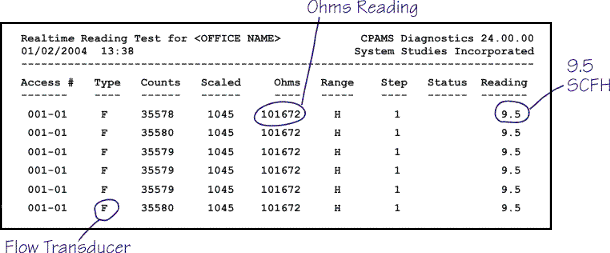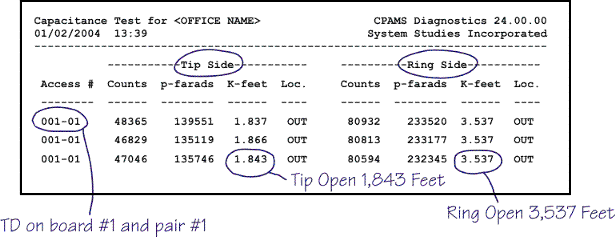289H Diagnostics Test
One of the least used, but most effective tools for air pressure monitoring analysis is the 289H Diagnostics program. It can be found in the PressureMAP Master Menu. Essentially, this diagnostics program gives you the ability to test a transducer pair before being dispatched on an alarm.
What follows is a look at the 289H Diagnostics Menu and its many capabilities, plus a discussion of some of its more practical uses. You'll notice in the example below that while there are 17 choices on the menu, for the purpose of diagnostics we'll focus on five main applications.

Choice #3 Realtime Reading Test
The Realtime Reading Test (shown in the screen sample below) gives a technician or analyzer the ability to see a realtime reading for a selected transducer or contactor every two or three seconds. The technician can watch the transducer reading and identify if any fluctuations occur. If the readings vary, it's possible that the fluctuation may be the result of cable trouble or changes in delivery pressure (a pole mounted compressor cycling, for example).

A device pair can also be easily identified in the field by creating a short and using the Realtime Reading Test. This capability saves valuable time when confirming device pairs. Another application of this diagnostics function is to check for stuck transducers. A flow transducer can be turned on and off and monitored to make sure that it is not sticking.
Choice #5 Capacitance Test
The Capacitance Test is really useful when a transducer reads open circuit. It's not enough to just identify that there's an open on the pair, you need some idea of where the open is located. Maybe it was caused by a jumper being removed in the office. If this were the case, it would be nice to know about it before leaving the garage.
With the Capacitance Test (see screen example below) you have the ability to determine the amount of wire there is on the ring and tip. If the reading indicates that there's only forty or fifty feet, for example, you won't have to pop manhole lids to find that open circuit.

Choice #8 Leakage Test
One of the main reasons that a transducer constantly comes into alarm is trouble on the monitoring pair. The Leakage Test (shown below) provides the resistance in Ohms between tip and ring, ring and ground, and tip and ground. Analysis Center management and personnel should make this test mandatory before dispatching a technician during off-hours.

Choice #9 AC Test
As the name implies, this diagnostics test makes it easy to check for AC voltage on a line. This information is invaluable in distinguishing between line problems and potential transducer problems.

Choice #10 DC Test
This capability, along with the Leakage Test, is probably most useful when determining if it is necessary to dispatch a technician. Any voltage on a pair will have a major impact on the pressure or flow reading.

As you can see from these brief explanations, PressureMAP's 289H Diagnostics feature is a real time-saving tool. And it is easy to use. It can be accessed by analyzers in a maintenance garage or by technicians in the field . If you would like more information on what this powerful tool can do for you, including an explanation of the other tests available from the 289H Diagnostics Menu, give System Studies a call.
And oh, by the way, if you have one of those "other" monitoring systems and would like to know more about the 289H LSS monitor, you know who to call.
